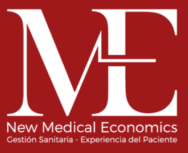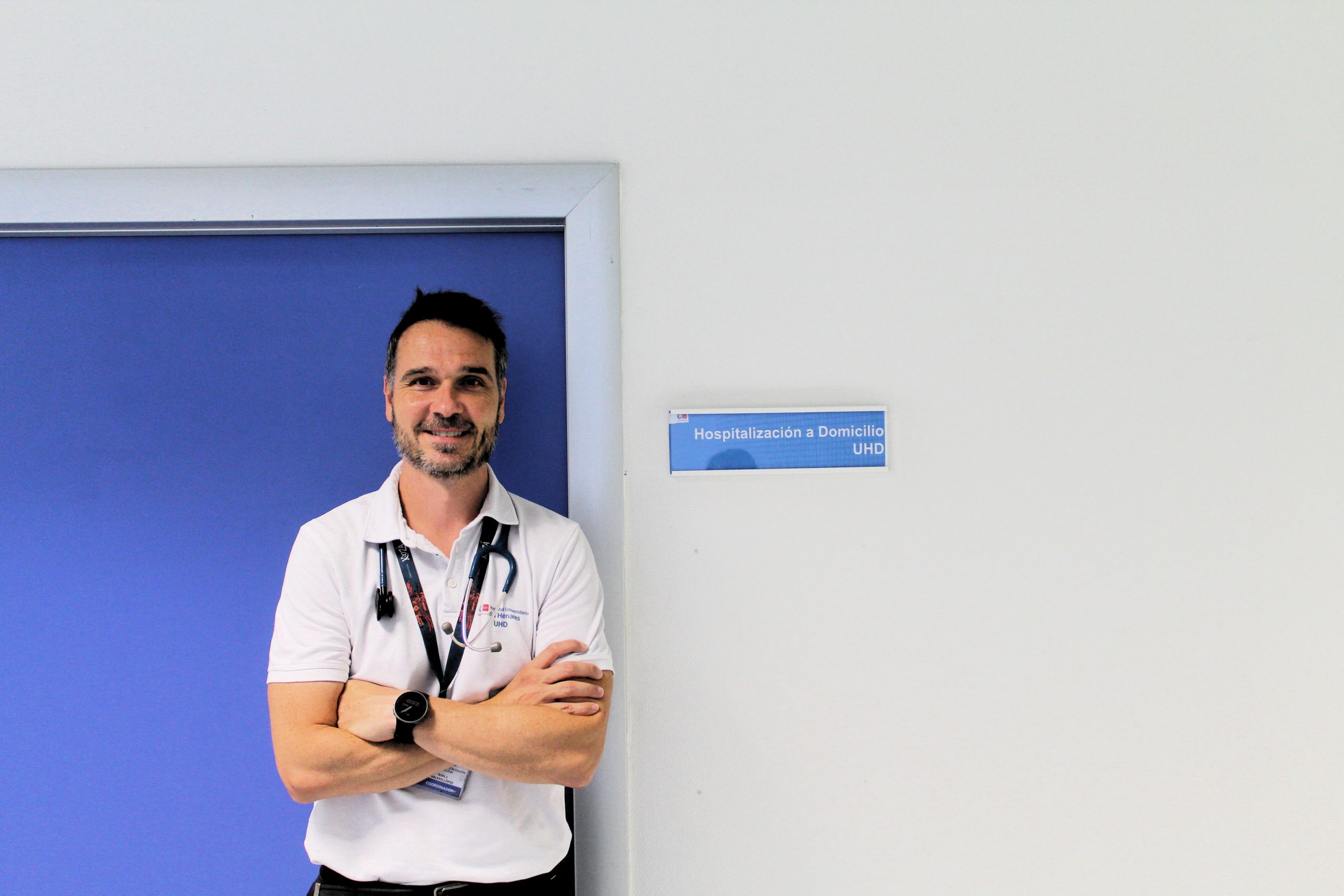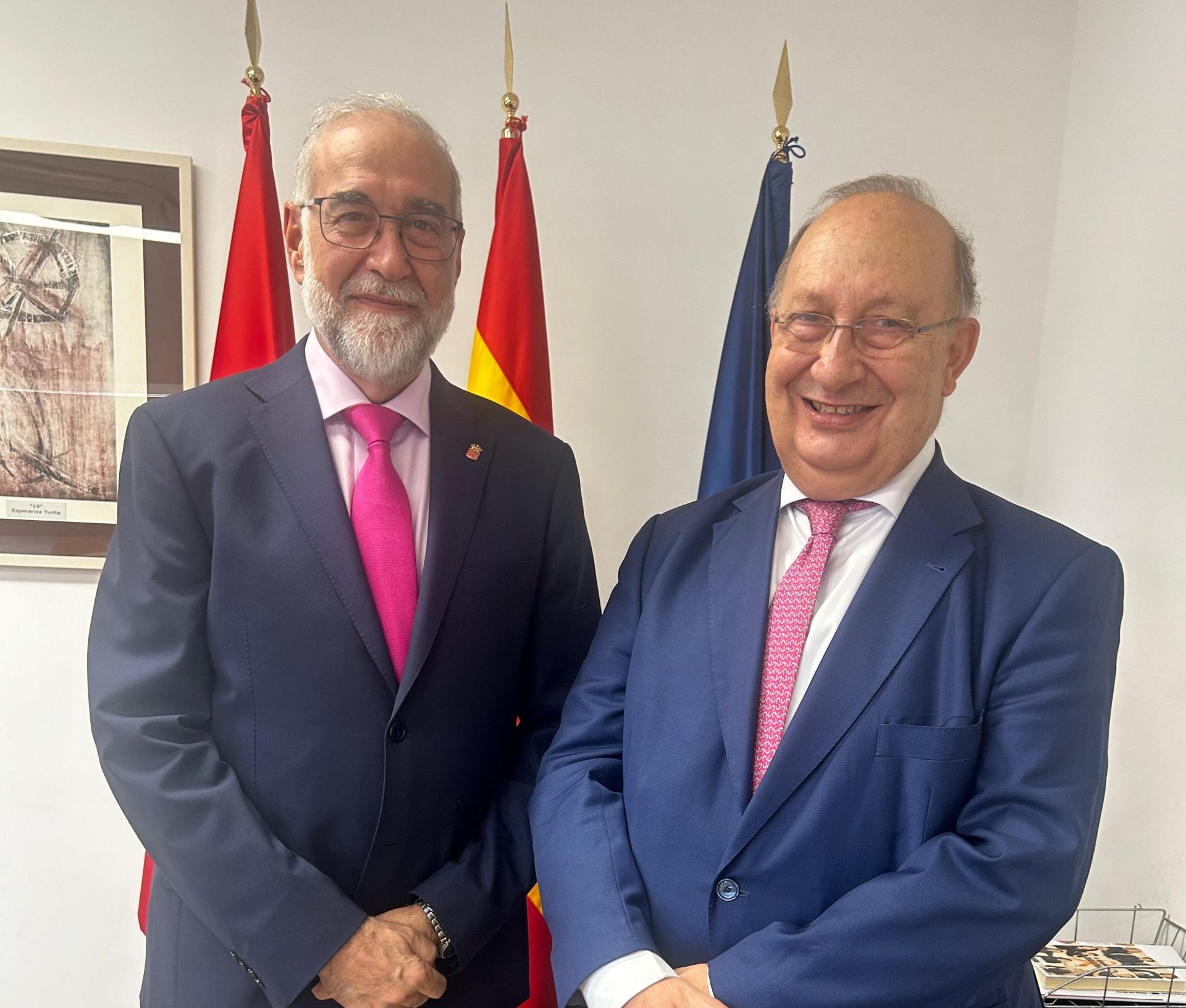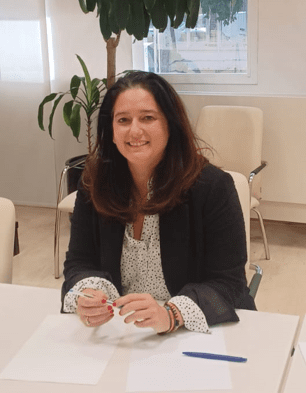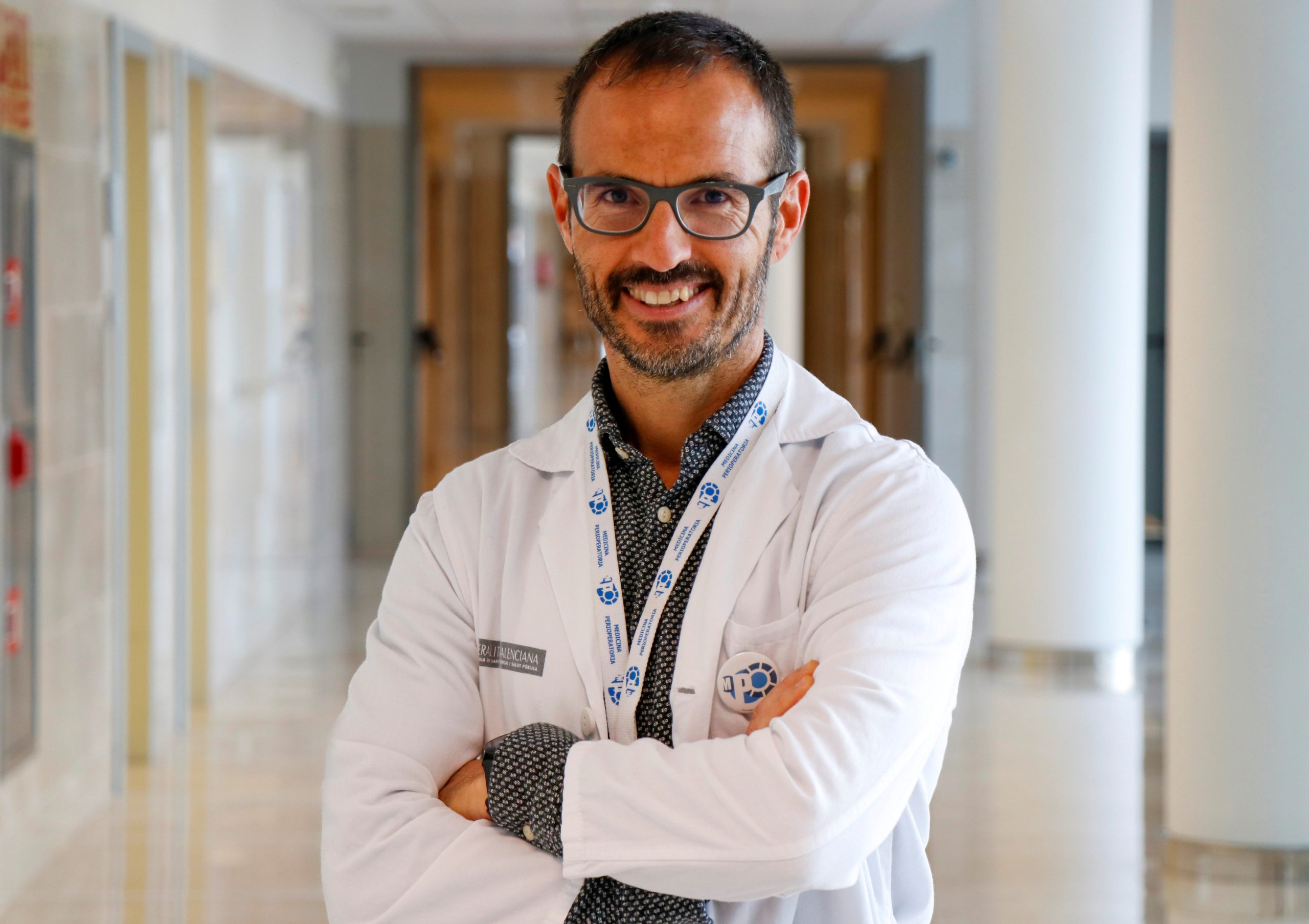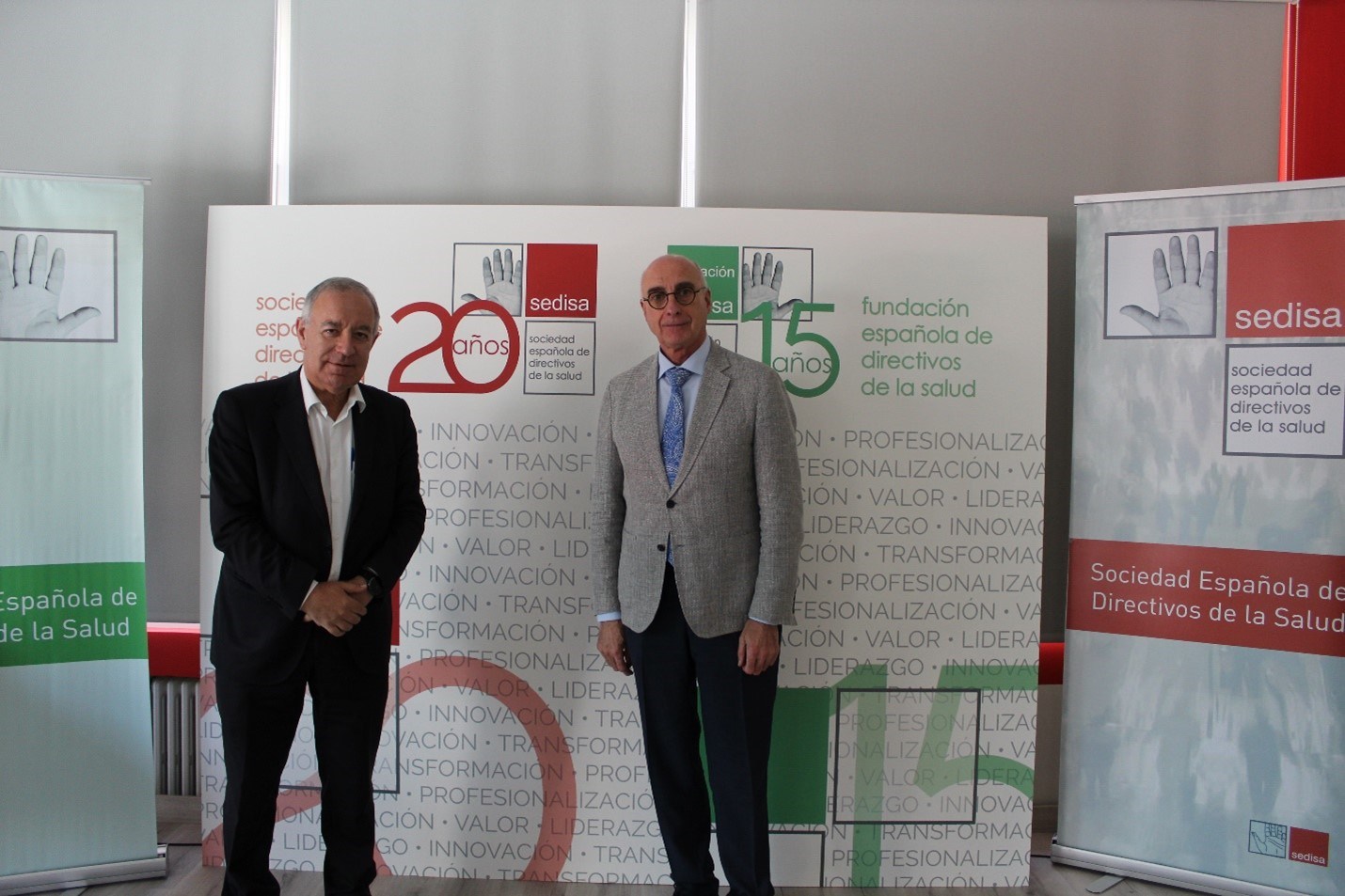‘Home hospitalisation improves the way patients deal with their pathology’.
A doctor specialising in Family and Community Medicine, Dr Iván Valero López has always been linked to Primary Care and the ER Unit. In recent years, he has become interested in the field of management and has worked as a manager in several health centres in the Region of Madrid. In this interview for New Medical Economics, Dr Valero explains the challenge of coordinating the Home Hospitalisation Unit at Hospital Universitario del Henares (Madrid), as well as the impact of home hospitalisation on the quality of life of patients.
What is the main purpose of the Home Hospitalisation Unit at Hospital del Henares?
The Unit is focused on patients who are hospitalised. These patients often suffer from acute diseases who can benefit from home medical care. This modality offers advantages to certain groups of patients, together with the convenience of being able to stay at home. Despite the clinical advantages of this type of admission, it is true that it cannot be applied to all patients or to all types of pathologies.
What are the advantages of home hospitalisation compared to traditional hospitalisation?
Traditional hospitalisation can be ‘aggressive’ for certain patient profiles, such as older patients or those with chronic pathologies and a certain profile, for instance at a cognitive level, since the hospital environment causes disorientation. By returning home, patients can recover their references and get their bearings. Moreover, in the hospital we find sick patients with many types of infections, and a person who enters with a high level of frailty may be at risk of catching other diseases. We apply many measures in the hospital to prevent infections, but they are not infallible. Hospitalisation at home reduces this risk.
Another advantage of home hospitalisation is the way of dealing with the pathology, which is more favourable when we are in our own environment. At home, patients are able to move around more and avoid the immobility that in some patients worsens their functional capacity or triggers associated problems. We encourage them to do things at home.
What are the criteria for selecting patients to be treated in the Home Hospitalisation Unit?
All home hospitalisation units have the same criteria. There are three criteria that must be fully met . One is demographic, i.e. you need to be in the hospital area, otherwise we can’t move. Each unit has its own means of transport, such as its own vehicles or contracts with taxi systems, Uber, etc.
The next criterion is a clinical criterion, that is, to know if we can treat the patient at home, we must know what is happening to them and find out if the treatment they require can be performed at home. We are specially focused on intravenous treatments, which means that we must guarantee that the treatment is administered at home with the same safety as in the hospital.
Therefore, patients who are not diagnosed and who are admitted to hospital are not considered as candidates for home hospitalisation. If we are clear about what is going on, that is, if we have a diagnosis, or there may have several associated diagnoses, but there is a main diagnosis with treatments that we know we can carry out at home, then the patient may be a candidate.
The last criterion is the role of the caregiver. While in a hospital there are health and non-health staff who are there 24/7, at home we stay for the time necessary for care, but the rest of the time patients are alone with their relatives or their caregivers, who may be their own relatives or people they have hired. A person who is ill needs someone to look after them and give them support in terms of food and cleaning at home, in other words, they need the support of a caregiver.
If these three criteria are not met, it is very difficult for us to admit someone with us, in their own home.
How is the team of professionals in the Home Hospitalisation Unit coordinated to provide care to patients?
We are a second-call service, which means that the patient does not call us directly. These units exist all over Spain; some of them work a little differently in this respect. We need a colleague to make a referral for a patient who is admitted to hospital and who may benefit from being hospitalised at home. First, we establish the diagnosis and assign the required treatment.
The other way is from Primary Care. We have a communication system with them, and in case they detect a patient who is at home and requires a specific admission to avoid having to go to hospital, they call us and we go to evaluate the patient.
In the case of nursing homes, we coordinate them with a liaison geriatric service. The nursing home talks to the liaison geriatricians and their colleagues who are in the hospital inform us, then we go to the nursing home to avoid admission to the hospital.
This is why teamwork is essential between us. That is to say, we cannot work well as a unit if there is no teamwork, as we share many responsibilities and in this way we can see which patients may be more suitable candidates or, even during the admission period, which patients need to return to the hospital or need another treatment. In this regard, trust and teamwork are key.
As for the schedule, our unit operates 12 hours a day from Monday to Sunday (including public holidays). Scheduled visits are made in the morning, dealing with incidents during the day depending on the patient’s needs. The night is covered with the support of SUMMA 112. If the patient needs something, they call us directly, without going through the hospital call centre. The nurses first analyse what the patient needs, whether it can be solved by telephone or they have to go to the hospital, as this activity corresponds to nurses. If we detect that it is something that needs to be carried out by doctors, we are on call.
Therefore, trust and teamwork must be paramount, because nurses make the assessment, and even go to the patient’s home and call us. We have access to tools to be able to carry out the work remotely, with computers, asking for tests, etc. Nursing is on site, so a lot of the work is done by the nurses and then we doctors make the decisions. That is why it is very important to work as a team.
How important are organisation and teamwork for the success of the Home Hospitalisation Unit?
The most important thing is to be very well organised as a team, to know very well what you have to do every day and to trust each other very much. Nursing and Medicine have to work very closely together, this is key, as we share and delegate many responsibilities in this regard, since the person who makes the decision at the time is not always in front of the patient and needs a colleague to support them.
In terms of management, we started in a hospital that didn’t exist. We got there thanks to the help of all our colleagues, because they are willing to help patients.
Now we are seeing which patients can benefit from this unit, and we deal with doubts every day. In the hospital the patient has everything, though not at home. People go home with oxygen, which requires a process of application and set-up in their home before the transfer takes place. This arrangement depends on many factors, such as managing the monitoring device, and the way the drug is administered. In this sense, all patients leave with a folder with basic and safety information as well as all the information about their medication.
Then, in the hospital, there are patients who are inserted a midline, which is a longer catheter, rather than peripheral lines. This is indicated for patients who are prescribed with antibiotic treatment for more than three days and present certain conditions. This is done under ultrasound guidance by the nursing staff. There are certain factors that can sometimes be more burdensome. This internal organisation means that the transfer time is variable. Once the patient is accepted, they sign the informed consent, and go through a process so that they can go home under certain conditions.
Coordination with Primary Care is performed through e-consultation, which is available across the Region of Madrid to request appointments from Primary Care to the hospital. We are not the first ones to work with Primary Care, but we have started to use this specific communication method in the Region of Madrid due to safety reasons, for patients to arrive safely and be correctly channelled. We are still fine-tuning the IT aspects to ensure a smooth process. In three months, 7 or 8 patients have been referred to us, and we had to coordinate that part of the management, which is already being handled by the Region of Madrid.
In short, coordination is specific to each of the services: inter-consultation within the hospital, liaison geriatrics for nursing homes and e-consultation for primary care. Our hospital does not offer this type of service in the Psychiatry and Paediatrics Units.
What types of pathologies or illnesses are the most common among the patients admitted in the Home Hospitalisation Unit?
They are divided into two or three categories. The largest number of admissions are for infectious pathologies and heart failure exacerbations. As for infectious pathologies, these admissions involve a variable length of time, ranging from a few days to several weeks of intravenous antibiotic treatment. In the case of heart failure, medication to relieve fluid overload is administered through infusors prepared by the Pharmacy Unit, which deliver the medication continuously.
We also treat other type of pathologies that can become unstable, as well as surgical pathologies that can be more or less infectious. Here we have a group that includes patients with ulcers that do not require antibiotics, whose care falls more on nursing, as well as post-surgical patients.
These are the three blocks: heart failure, all sorts of infections and post-surgical patients or patients with ulcers.
What has been the impact of home hospitalisation on the quality of life of patients and their families?
We have a bias, as every patient who comes to us gives their informed consent and knows what we are going to do at home. At first, the patient is full of doubts and uncertainty, but according to all our satisfaction surveys, they end up with a very positive opinion. None of them felt at the end of the admission that not everything that needed to be done had been done. Depending on the level of complexity of the patient, sometimes there are more or less insecurities, more or less complex situations. The good news is that they realise that they have direct access to us, because if they call us on the phone, only two things can happen: they may be put on hold or we pick up the phone, and if they are on hold, we will call them later. As a service, we give a very quick response to patients within our schedule, which makes them feel relieved. We rely a lot on caregivers and families, and really trust them.
Primary Care is the only speciality that is prepared to provide home care, since it is part of their training, although they do not have the tools we have in the hospital to solve certain health problems. On a daily basis, we transfer everything that can be transferred from the hospital to the patient’s home and handle many things that may involve greater or lesser complexity. We give patients instructions and always tell them to call us if they have any doubts. There are very simple things that they can do by themselves.
At the beginning, they are more worried about all these things, which we delegated after assessing very thoroughly what can be delegated and not, but they gradually learn to do them very well. We also do many interventions at home, and depending on their illness they may need to make some changes, such as removing carpets, changing the shower or getting another bed.
At the end of the admission, even if they had a very bad time because of complications, patients always have a very positive perception. In addition, they know that if we decide that they cannot stay at home, we are going to refer them to the hospital, as they are actually admitted to the hospital, even though we have changed the hospital bed for their home. That makes them trust us and feel more and more secure.
What measures are implemented to ensure the safety and well-being of patients during their stay at home?
It depends on the technology we have. We are adding tools to the way work, so as to have more information during the time we are not at home. Being able to increase the number of tools we use is really helpful. We have tools for medication such as infusers and infusion pumps, all of which ensure that the medication is administered in a specific way. If the medication just requires a one-off administration, we move around to administer it.
The ultrasound scanner is also used at home. At the moment, we have two scanners that save us from having to take the patient to the hospital. The evolution of the patient can be assessed with these tools that detect, for example, heart failure or other type of pathologies or complications that may arise. This helps us avoid moving patients to perform a scan, an MRI or an X-ray.
I hope that we will soon have tools to do blood tests at home, as the sample is sometimes spoilt during transport. This type of device allows to analyse the sample at home and get the result in a few minutes. These devices have to do with the evaluation and monitoring of patients.
We also have a monitoring device, which we like very much, as it delivers two types of information: one which is merely objective, and the other subjective. There are many ways in which we can achieve this. We put a device on the patient, which is not annoying. It is a pulse oximetry sensor, similar to the one we can have in the hospital. This is connected to a wristband that connects to the patient’s mobile device through Bluetooth. The information (O2 saturation, respiratory rate, heart rate, and even temperature if we add a core body temperature device) is sent thanks to a free app that communicates online with a portal with health security, where we see the data recorded over 24 hours.
This technology helps us know what is going on with the patient throughout the day. It is extremely useful for patients with respiratory or infectious cardiac pathologies, as it allows us analyse the patient’s condition in the previous hours. The system is different from those in the ICU or the ER service. This one is used to see how the patient has been. It gives us more security when it comes to discharging the patient or changing their treatment.
As for the subjective part, the device asks a series of questions at a specific time in the evening, between 18h and 18:30h. Two programmes have been designed, where the colleagues from Masimo (the trading company behind the device) prepared specific and simple questions together with us. They are yes or no questions.
The most complex is the first one: How are you feeling today? Good, fair or bad? From there, depending on why they are admitted, they get some questions or others.
We have a specific password to enter, all this in a health cloud. If I delete things from the cloud, all the information disappears.
The problem we have found with very old people is that they use old mobiles, but what we do in these cases is to keep track of them with their caregiver. This adds a bit of complexity. Sometimes there can be problems because the application doesn’t work well on that phone, though they are the type of technology challenges you can come across with your own computer or any other device.
How do you follow up patients once they are discharged from the Home Hospitalisation Unit?
Unfortunately, we don’t have a check-up service. We are not an examination or check-up service, but a service for specific patients It is something that has been planned and at some point we will certainly move in that direction. These patients present a certain level of dependency and are fragile. It would be great to be able to carry out check-ups at home without them having to come to the hospital, and be able to admit them from the beginning at home. This service for example, is available at Hospital 12 de Octubre. They do not offer hospitalisation at home, but the Pneumology service has been providing their services at home for years and admits patients at home.
It would be very positive for bronchial, chronic and heart failure patients that we, who already know them, got to know their home. We know that they have special characteristics and some of them do not want to come to the hospital or to the health centre. This type of direct care at home is really good, but it requires time and human resources. Therefore, more nurses and more doctors are needed to carry out a specific activity, since the time we have is already distributed; we cannot take on more than what we are doing at present. If we start this new activity, which would be excellent, we would give continuity to patients we already know, and we would be able to start dealing with heart failure and COPD.
In September, we will start seeing patients from haematology and oncology who need specific medication for a certain period of time, which is administered in outpatient care to those who find it difficult to come to the hospital for dependency or comorbidity reasons, that is, their underlying disease that may be affected if they come to the hospital. The haematology service informs us after the check-up, which is the closest thing to being able to have a medical examination, because we are going to do everything at home. In other words, we are going to work as a team with the haematology service.
What are the future plans of the Home Hospitalisation Unit to keep on improving patient care?
Above all, being able to implement devices that deliver value such as Masimo’s to analyse data that are more related to clinical analysis. And especially, to expand our service portfolio. In other words, we want to be able do things that differ from what we are doing, and improve and continually re-evaluate the ones we are currently doing. In September, for example, we are going to start administering a specific medication that is only given in the hospital and at home. We are also assessing the administration of intravenous iron at home, which we have already tried with some patients, but we want to do it in a slightly more globalised way, together with haematology. That is, we want to see what patients may need a specific treatment, a follow-up, and who can also benefit from receiving the treatment at home with the same efficacy and safety.
We are not going to be able to cover all the services that are covered in the hospital, this is impossible. These are selected patients with selected pathologies and selected treatments. However, home hospitalisation increases the capacity of the hospital to reach a number of patients, thus freeing up space in the hospital, to be able to treat more patients. Indeed, it does not free up space, it results in an increase in the number of beds.

